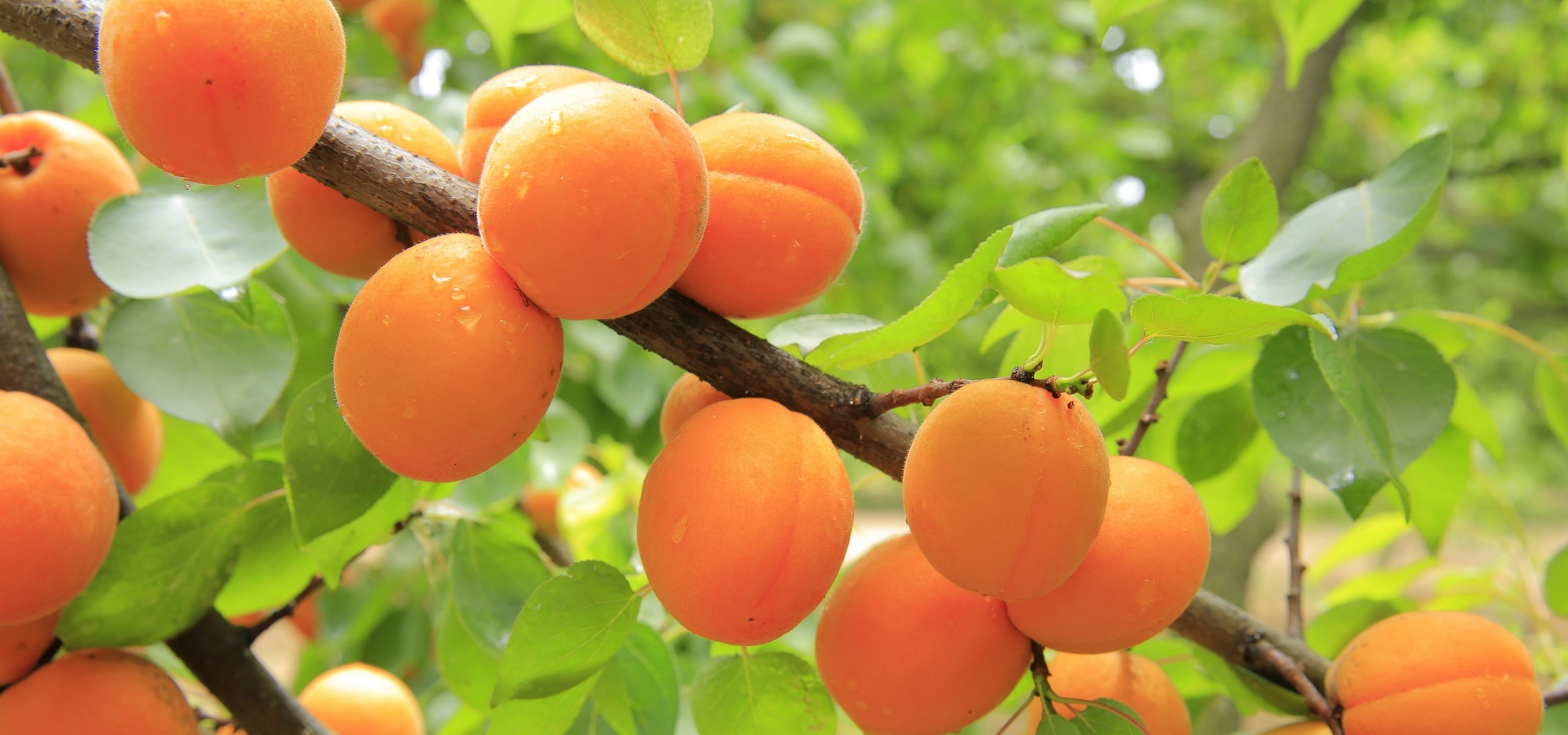
Apricot tree: planting, pruning and care
Our tips for abundant harvests
Contents
The apricot tree is an easy-to-grow fruit tree that thrives in well-drained soil, in gardens, orchards, and even, for some varieties, in pots on the terrace.
It is drought-resistant and requires little maintenance. Its stunning flowering in spring gives way to delicious, juicy, and sweet fruits in summer… provided you plant it well, care for it, and prune it. Discover our tips!
Where to plant the apricot tree?
The apricot tree is of course well-suited to the orchard but can also find its place in the garden, isolated on a short grass meadow or at the back of a flower bed, thanks to its very ornamental spring flowering.
The apricot tree is drought-resistant but sensitive to excess moisture. Choose a sunny and sheltered spot with well-drained soil.
For small spaces, there are dwarf varieties (for example, Garden Aprigold®), which can be grown in the ground or in pots.
The apricot tree can be planted throughout France; however, the harvest will be more uncertain in the North. Indeed, the apricot tree is very hardy, but the flowers are particularly sensitive to spring frosts. If you live north of the Loire, opt for a late-flowering variety and, if possible, train the apricot tree along a south-facing wall. With a few exceptions, most apricot tree varieties are self-fertile. Therefore, the presence of another variety is not essential, although it can help optimise fruiting.
Read also
How to plant a fruit tree?When and how to plant it?
The apricot tree with bare roots is ideally planted between October and March, outside of frost periods. The plants offered in containers can be planted all year round except during periods of extreme heat or frost.
It is a fruit tree that thrives in all types of soils, including stony and slightly calcareous soils, but it particularly enjoys well-drained and light soils.
To plant:
- Loosen the soil deeply, remove stones and unwanted herbs. Add some gravel to improve drainage if necessary.
- Dig a hole 3 to 4 times the volume of the root ball. Be sure to place the subsoil on one side and the topsoil on the other. Mix crushed horn and organic matter (potting soil, compost, etc.) with the subsoil and pour this mixture into the bottom of the planting hole.
- Install a stake, place the root ball, and cover it with topsoil without burying the grafting collar.
- Form a basin around the base and water generously. Finally, tie the stake to the plant, crossing the tie in an 8 shape, without touching the trunk.
The apricot tree can be grown in the open or trained along a support (such as an oblique or fan-shaped espalier).
Take good care of it, avoid diseases.
To properly care for your apricot tree:
- every year, in autumn, apply well-matured compost on the surface.
- In winter, add a small handful of wood ash, rich in potash, to improve fruiting. Hoe around the base of the tree if necessary.
- Water during the first year after planting, then as needed, especially during hot weather.
The apricot tree can be prone to various diseases. Preventively spray Bordeaux mixture and horsetail decoctions to combat peach leaf curl (swollen leaves) and brown rot (drying of flowers and fruit rot on the tree). If you notice gum exudation, clean the gum, remove the affected parts, and apply a healing agent.
→ Find our complete guide on the diseases and pests of the apricot tree and Why is my apricot tree not fruiting? Causes and solutions
Pruning the apricot tree
Pruning of apricot trees takes place approximately every 3 years (except for trained forms which will be pruned annually, favouring flower buds).
It is carried out in autumn, after leaf fall or, if necessary, in winter, avoiding frost periods. To do this:
- Remove any suckers that have grown at the base of the tree and any vigorous shoots developing on the trunk.
- Eliminate dead or broken branches, as well as those that cross each other.
- Cut back twigs and some inner branches to allow air and light to circulate within.
- Trim the ends of the branches above a bud facing outward.
- Treat pruning wounds with a healing agent such as clay.
- In May-June, after the natural drop of misshapen fruits, remove excess fruits. This thinning, which allows for larger fruits and limits the phenomenon of alternation, can be done in 2 or 3 stages.
- In summer, also remove small branches that grow inward. After several years, if production begins to decline, you can perform a restoration pruning by reducing the main branches by half to strengthen the fruit-bearing shoots.
- Subscribe!
- Contents































Comments